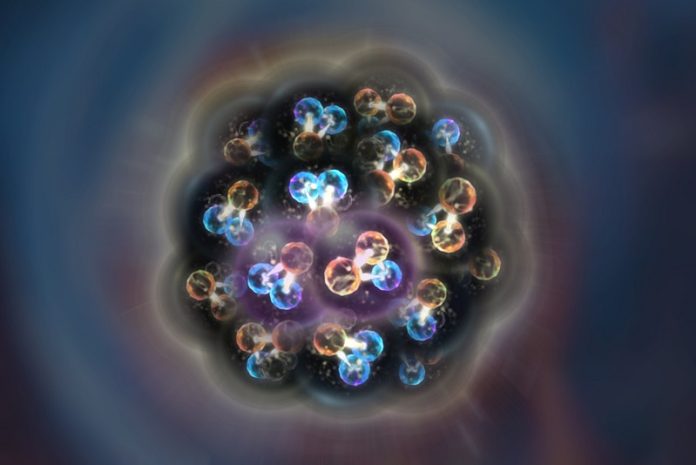
For the first time, scientists have successfully created a detailed and accurate picture of atomic nuclei using the tiny building blocks inside protons and neutrons: quarks and gluons.
This groundbreaking discovery has solved a puzzle that scientists have been trying to figure out for decades.
Atomic nuclei, the core of atoms, are made up of protons and neutrons. Protons and neutrons, in turn, are made up of even smaller particles called quarks, which are held together by particles known as gluons.
Scientists have known this since the 1960s, but up until now, it has been difficult to use this knowledge to explain all the results from experiments on atomic nuclei.
Instead, scientists had two separate models: one for low-energy experiments, where protons and neutrons are visible, and another for high-energy experiments, where quarks and gluons become visible.
This problem was finally solved by an international team of physicists, including scientists from the Polish Academy of Sciences.
Their findings were published in the journal Physical Review Letters.
Dr. Aleksander Kusina, one of the researchers involved, explained, “In our work, we managed to bring together these two previously separated worlds of protons and neutrons at low energies, and quarks and gluons at high energies.”
Physicists study atomic nuclei by smashing them into smaller particles and analyzing what happens in these collisions.
At low energies, the atomic nuclei behave as if they’re made of protons and neutrons, but at higher energies, scientists can see the quarks and gluons inside the protons and neutrons.
While experiments at low and high energies have been modeled accurately, scientists had not yet combined these two models into one unified description—until now.
The researchers used data from high-energy collisions, including those from experiments at the Large Hadron Collider (LHC) in Geneva, Switzerland. Their main goal was to map how quarks and gluons are distributed within atomic nuclei.
To do this, they used mathematical tools called parton distribution functions (PDFs), which describe how quarks and gluons are arranged inside protons, neutrons, and nuclei at high energies.
What made their approach unique was how they extended the PDFs to account for the way protons and neutrons interact with each other in pairs—something that was only understood in low-energy models before. By applying this new method, the researchers were able to describe the structure of atomic nuclei in both high- and low-energy experiments for 18 different atomic nuclei.
One key finding was that most of the nucleon pairs (pairs of protons and neutrons) inside atomic nuclei consist of a proton and a neutron paired together.
This is particularly interesting for heavy nuclei, like those of gold or lead. Their model also provided more accurate predictions than previous methods for how quarks and gluons behave inside atomic nuclei.
Dr. Kusina emphasized that this new model not only simplifies the theoretical description of atomic nuclei but also helps improve the precision of future studies.
This achievement opens up new possibilities for understanding atomic nuclei and unifies the knowledge gained from both high-energy and low-energy nuclear experiments.
This discovery marks a major step forward in nuclear physics, as scientists can now explain the behavior of atomic nuclei more fully and accurately by using both quarks and gluons and protons and neutrons in a single framework.



